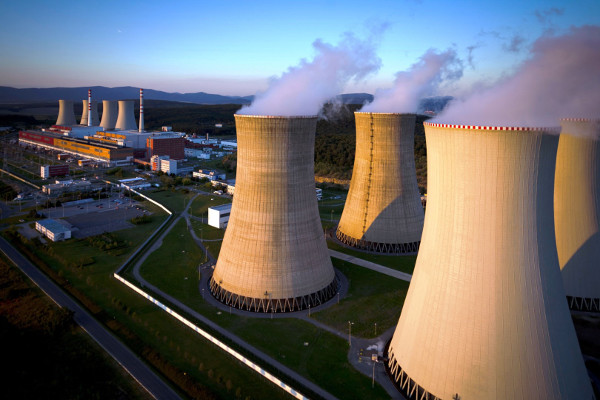Hungary works with Russia on a new power plant and with Iran on new technologies.
For nuclear energy in Central Europe, 2017 has already been a good year. It has made some progress.
European Commission has given a green light to Hungary to build two new nuclear reactors. In Slovakia, the shareholders of Mochovce have agreed on a new timeline and budget for completing two additional units. Slovakia has also convinced Hungary to agree on expanding electric interconnections necessary for exports to South-Eastern Europe. As for Poland, it started an environmental survey for its first reactors. Finally, Budapest launched a cooperation with Iran on small modular reactors.
The bad news is, though, that financial risks remain part of the bigger nuclear picture in Central Europe.
Increasing Hungary’s debt
In March, Brussels gave a final go-ahead to two new reactors at Paks, Hungary. The Commission agreed with state aid poured into the project, whose cost is estimated at 12 billion euros.
The two new units with a total capacity of 2 200 MW should replace four older ones. For several years, however, two new and two older reactors are scheduled to run in parallel.
The new reactors will be built by Russian companies, according to an intergovernmental agreement. Moscow will also fund most of the costs via a credit line.
In an interview with SETPlan2016 sk, energy expert András Deák warned that the project may shake Hungary’s public finances. “The public debt trajectory will be reversed. We will again increase debt, year after year, quite heavily,” said Deák, a senior research fellow at the Institute of World Economics of the Hungarian Academy of Sciences.
Neither on time, nor on budget
The end of last month highlighted the financial risks linked to Slovakia’s new-build with a cumulated capacity of 1 000 MW.
The government, a minority shareholder in Slovenské elektrárne, found a consensus with the remaining shareholders, managing the build-up of two new reactors at Mochovce. They agreed on a new cost for completing – 5,4 billion euros – and a new schedule – with the first unit launched in 2018 and the second in 2019.
Since 2008, when the construction resumed, both the bill and the timeline have basically doubled. Back then, the plan was to finish Mochovce 3 and 4 for 2,8 billion in 2012-2013.
The site is funded by Slovenské elektrárne themselves, on the expense of dividends. The technology is Russian.
Slovakia-Hungary links, Poland’s project
March also saw the Slovak and Hungarian transmission system operators signing a contract to expand electricity links.
Slovakia’s southern connection is important for the financial viability of Mochovce 3 and 4. Hungary and South-Eastern Europe may be interesting markets for exporting electricity produced by the nuclear overcapacities after Mochovce will have been completed.
In the meantime, Poland moved on with its own nuclear project. PGE EJ1, the subsidiary of the state-owned PGNiG, announced the start of “localisation and environmental studies” in Pomerania Province, according to World Nuclear News.
Based on a 2014 plan, Poland foresees two nuclear power plants with a total capacity of 6 000 MW. Foreseen in 2022-2024, the launch of Poland’s first reactors has to be, however, rescheduled.
Hungary and Iran work on SMRs
Slovakia and Hungary’s new-builds of Russian trademark are not the only elements of an east-bound strategy.
In the beginning of April, Hungarian Deputy Prime Minister and Head of the Atomic Energy Organisation of Iran (AEOI) signed a Memorandum of Understanding. The document covers, among others, cooperation between the two countries on designing small nuclear power plants for scientific purposes.
According to World Nuclear News, AEOI said Hungary had useful experience in Russian-designed VVER nuclear reactor technology.
Small modular reactors (SMRs) are a promising technology as new power plants are not built on time and budget. Hungary’s case shows that for counties with a Russian technology, it is natural that the East is where they seek innovations.

 __
__
 _
_
 _
_ _
_